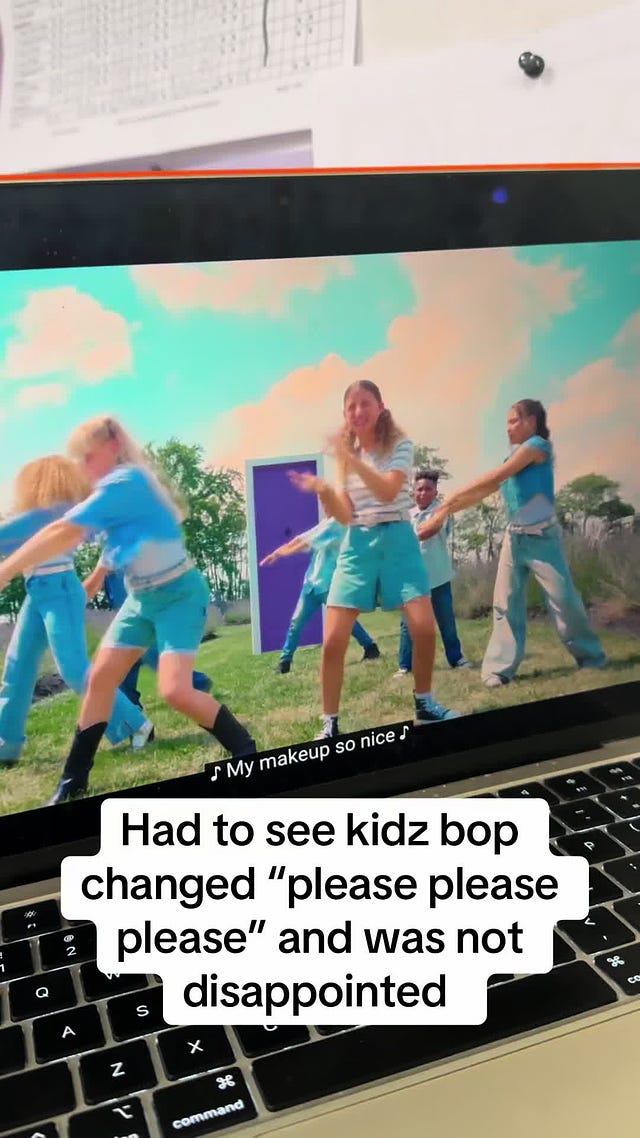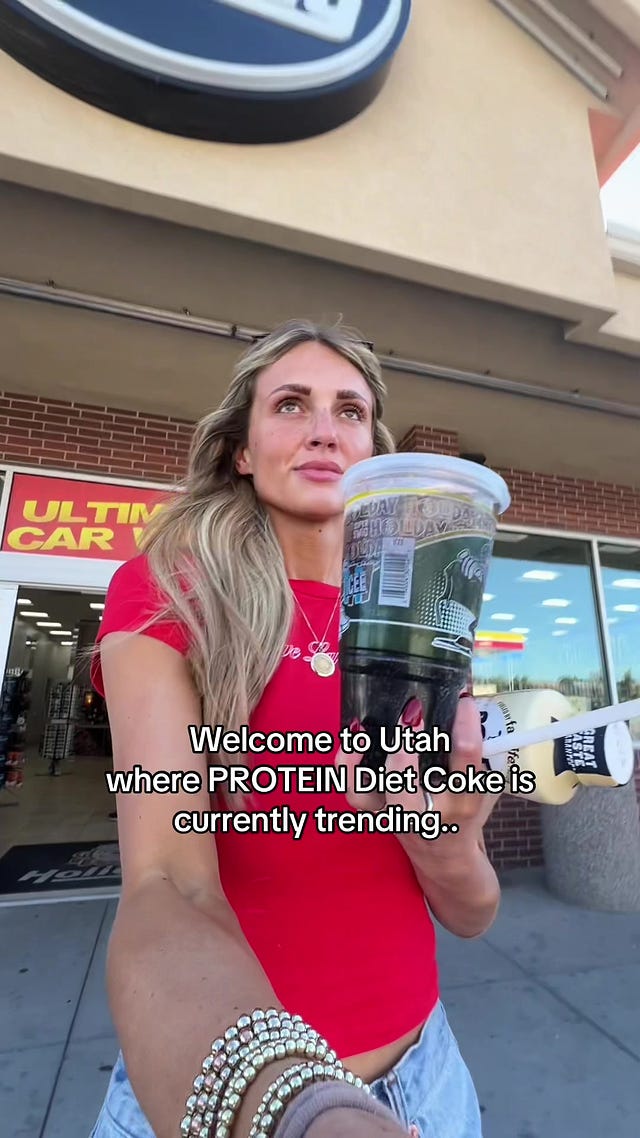Dense Bean Salad Girl and Bella Swancore
after school weekend edition
Welcome back to After School Weekend Edition, a not-so-brief trends debrief for paid subscribers. Your support keeps this newsletter going! 💫
Today we’re talking about:
Fibermaxxing
Campus tours as the new influencer trip
An imminent Nike comeback
The sweats brand 20-somethings are selling out
“Vest tops are to us what peplum tops were to the 2010s”
Poncho Girl Fall
“Workout blush”
Glossier’s fragrance launch
The most hated song on TikTok right now
The Justin Bieber 2015 track going viral (before you ask, no, it’s not also the most hated song)
The Spotify Bedroom meme
Plus everything else that happened this week in trends and what I’m buying/reading/listening to. First, my favorite TikTok of the week:
I saw quite an influx of subscribers from writing this week’s edition of Substack Reads. If you’re new here, welcome!
And if you aren’t new but missed that send, you can read it here — it features some of my faves, including
, , , , , and more.Monday through Thursday, I send a free newsletter that features 6-7 headlines about youth culture trends plus my favorite TikTok of the day; the weekend edition is a bit more freewheeling and much, much longer. I dig deeper into trends that have been top of mind, and I also write a recap of all of the youth trends — style, beauty, culture — that have caught my attention in the last week. Hope you enjoy!
Dense Bean Salad Girl and Fibermaxxing
When I was on Claire and Erica’s
podcast last week, I mentioned that fiber is — or is soon going to be — the new protein.For years, manosphere-residing gym bros and Alo Yoga-wearing TikTok girlies alike have been focused on proteinmaxxing, with fluffy yogurt, proffee (a portmanteau for “protein coffee”), protein lemonade, and dry scooping (swallowing pre-workout energy powder with no liquid) taking over social media.
The protein obsession has also led to unprecedented interest in cottage cheese. In July, Google searches for “cottage cheese” rose to the highest levels recorded since 2004. According to Circana data from May, cottage cheese sales were up 13.5% year-over-year, up to $1.33 billion. Last year, Good Culture, a challenger brand that’s now the second best-selling cottage cheese behind Daisy, reported 80% growth.
Those of us who grew up reading our mom’s women’s magazines — titles like Redbook, Woman’s Day, Good Housekeeping, Better Homes & Gardens, Family Circle, and Ladies’ Home Journal, the majority of which are now defunct — remember when cottage cheese was pushed on us as a diet food that could solve all of our problems, not unlike the way it’s being marketed to us now.
Today the framing is a little different; the ‘90s were more preoccupied with “low fat” than “high protein,” and back then, cottage cheese was positioned as a responsible dietary choice that symbolized a woman’s willpower to lose weight — wholly devoid of pleasure — rather than a trendy IYKYK snack that tastes a little bit indulgent and will keep you full for a long time. Back then, deprivation was a badge and fullness was a flaw. These days, “feeling full” is a good thing, even if it’s achieved by tricking your body with “hacks” like eating a stick of butter.
Keep reading with a 7-day free trial
Subscribe to After School by Casey Lewis to keep reading this post and get 7 days of free access to the full post archives.







